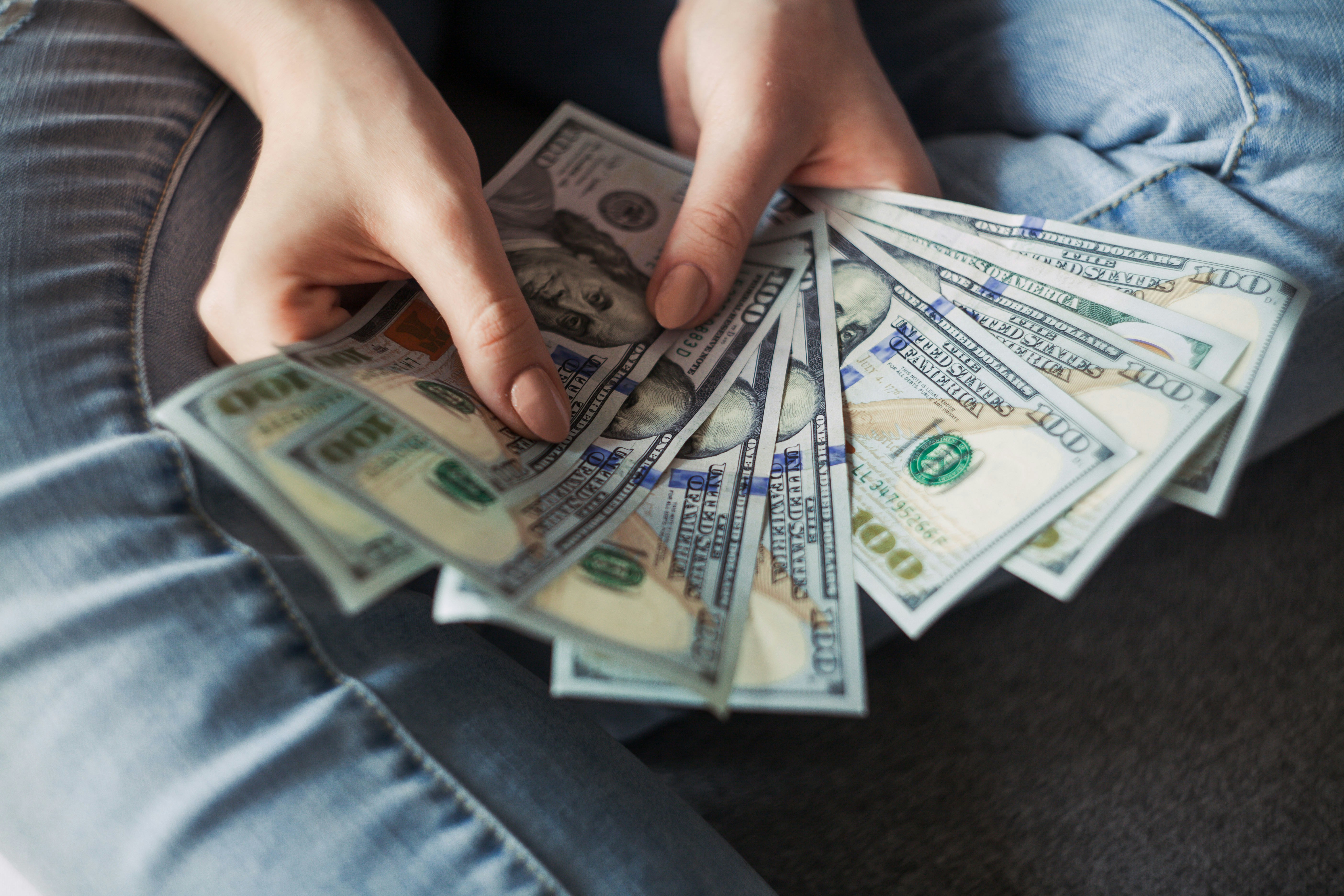Our Guide To Selling Your Vintage Guitar
Selling a guitar—whether it's a cherished vintage instrument, a modern high-end model, or simply gear you've outgrown—can be both financially rewarding and emotionally challenging. The guitar market offers numerous selling options, each with distinct advantages and potential pitfalls. This comprehensive guide will walk you through the entire process of selling your guitar, from accurately determining its value to finalizing the sale, with expert tips to maximize your return.
Whether you're downsizing your collection, funding an upgrade, or parting with a valuable vintage instrument, understanding the intricacies of the guitar market will help you make informed decisions and achieve the best possible outcome. This guide specifically addresses the needs of sellers with valuable instruments who want to ensure they're not leaving money on the table.
Step 1: Determine Your Guitar's True Value
The foundation of a successful sale is knowing exactly what your guitar is worth in the current market.
Identify Your Guitar Precisely
Before valuation, you need to know exactly what you have:
Exact Model and Year: Use our Guitar Serial Number Lookup guides to identify your guitar's precise age
Original Specifications: Determine if your guitar has its original parts or has been modified
Limited Edition Status: Check if your guitar was part of a limited production run
Country of Manufacture: American-made instruments often command higher prices than overseas production
Professional Appraisal Options
For valuable or vintage instruments, professional appraisal is strongly recommended:
In-Person Appraisal: The most thorough option, allowing experts to physically inspect your instrument
Virtual Appraisal: Submit detailed photos and information for remote evaluation
Our Free Appraisal Service: We offer comprehensive, no-obligation valuations for all types of guitars
Market Research Resources
To understand current market conditions:
Completed Sales: Look at recently completed sales on Reverb, eBay, and other platforms
Dealer Listings: Check what established dealers are asking for similar instruments
Price Guides: Reference the Blue Book of Guitar Values and Vintage Guitar Magazine's price guide
Forum Discussions: Guitar forums often contain valuable pricing discussions for rare models
Value-Affecting Factors
Understanding these factors helps set realistic expectations:
Condition: Near-mint instruments command significant premiums
Originality: All-original vintage guitars are worth substantially more than modified examples
Provenance: Documented history, especially celebrity ownership, can multiply value
Documentation: Original case, paperwork, and accessories significantly enhance value
Market Trends: Be aware of which brands and models are appreciating or declining
Step 2: Decide Where to Sell
Different selling venues offer distinct trade-offs between convenience, speed, price, and security.
Selling Direct to a Dealer
Pros:
Fastest, most convenient option
Immediate payment
No shipping or payment risks
No need to field inquiries or negotiations
Cons:
Typically offers 60-70% of retail value
Less control over the final price
Best For: Sellers prioritizing convenience and immediate cash
Consignment Sales
Pros:
Higher return than selling to a dealer (typically 80-90% of final sale price)
Professional handling and marketing
Access to dealer's customer base
Cons:
Longer timeframe to receive payment
Commission fees (typically 10-20%)
Less control over pricing strategy
Best For: Valuable vintage instruments where maximizing return is important but convenience is still desired
Online Marketplaces
Dedicated Guitar Platforms (Reverb, Guitar Center Used)
Pros:
Guitar-knowledgeable audience
Better security than general marketplaces
Specialized listing formats for instruments
Cons:
Fees (typically 5-10%)
Handling all aspects of the sale yourself
Potential shipping and payment complications
Best For: Moderately valuable instruments where you want a balance of convenience and maximum return
General Platforms (eBay, Facebook Marketplace)
Pros:
Enormous potential audience
Options for both local and shipped sales
Flexible pricing strategies (auction or fixed price)
Cons:
Many non-serious inquiries
Security concerns with payments and shipping
Dealing with buyers who may not understand guitar values
Best For: Common models and budget instruments where finding the right buyer might take time
Local Sales (Craigslist, Local Music Stores)
Pros:
No shipping required
Face-to-face transaction
No fees or commissions
Immediate payment
Cons:
Limited audience
Safety concerns with meeting strangers
More haggling and non-serious inquiries
Best For: Lower-value instruments and amplifiers that would be costly to ship
We specialize in purchasing high-end and vintage guitars directly from sellers:
Competitive offers (typically higher than other dealers)
Free professional appraisal included
Immediate payment
Free shipping arrangement
No haggling or uncertainty
Step 3: Prepare Your Guitar for Sale
Proper preparation can significantly increase your guitar's attractiveness to buyers and its final selling price.
Professional Setup
A fresh setup makes your guitar play and sound its best:
String replacement: Fresh strings make a huge difference in playability and sound
Action adjustment: Ensures comfortable playability
Intonation check: Confirms the guitar plays in tune throughout the neck
Electronics testing: Verifies all pickups, switches, and controls function properly
Cleaning and Presentation
Careful cleaning enhances appearance without damaging value:
Body cleaning: Use appropriate polish for your guitar's finish type (nitrocellulose vs. polyurethane)
Fretboard conditioning: Clean and condition unfinished fretboards with appropriate oil
Hardware polishing: Gently clean metal parts without over-polishing vintage patina
Case cleaning: Don't neglect the case—a clean, well-presented case adds value
Vintage Instrument Considerations
For valuable vintage instruments, preservation of originality is paramount:
Don't refret: Leave vintage fretwork as-is, even if worn
Don't polish out finish checking: Natural aging is valuable on vintage instruments
Don't replace original parts: Even if worn, original parts are more valuable than replacements
Don't over-clean: Patina and natural aging are desirable on vintage instruments
Documentation and Accessories
Gather all related materials to maximize value:
Original case: The correct original case can add hundreds or thousands to value
Paperwork: Warranty cards, manuals, receipts, certificates of authenticity
Tags and case candy: Hang tags, adjustment tools, polishing cloth, etc.
Previous owner documentation: Ownership history, especially for notable previous owners
Repair and maintenance records: Documentation of professional work enhances valueBest For: Lower-value instruments and amplifiers that would be costly to ship
Step 4: Create a Compelling Listing
If selling online, your listing quality directly impacts your success.
Photography Best Practices
High-quality photos are essential for online guitar sales:
Lighting: Use diffused natural light to show true colors without harsh reflections
Background: Choose a clean, simple background that doesn't distract
Quantity: Include 15-20 photos covering all aspects of the instrument
Detail shots: Close-ups of serial numbers, date stamps, neck joints, electronics
Honest representation: Show any damage or wear clearly
Full package: Include photos of the case and all accessories
Detailed Description Guidelines
Comprehensive descriptions build buyer confidence:
Complete specifications: Model, year, finish, electronics configuration
Precise condition details: Be specific about any wear, damage, or repairs
Modification disclosure: Fully disclose any non-original parts or modifications
Playability information: Describe action, neck feel, and tonal characteristics
History and provenance: Include any known ownership history or interesting backstory
Reason for selling: Honest disclosure of why you're parting with the instrument
Pricing Strategy
Set a price that attracts serious buyers:
Research-based pricing: Use completed sales data, not just asking prices
Condition-appropriate: Be realistic about condition's impact on value
Room for negotiation: Build in modest negotiation room without overpricing
Limited-time incentives: Consider time-limited offers to create urgency
Selling your guitar is EASY
Step 5: Negotiate Effectively
Step 6: Handle Payment and Shipping Safely
The final transaction phase carries significant risk if not handled properly.
Secure Payment Methods
Protect yourself from payment fraud:
Recommended: PayPal Goods & Services, bank wire transfers, cashier's checks
Use with caution: Personal checks (wait for clearing), payment apps (Venmo, Zelle)
In-person options: Cash (use counterfeit detection), cashier's checks
Avoid: Money orders, cryptocurrency, international wire transfers from unknown buyers
Guitar Shipping Essentials
Proper shipping prevents damage and disputes:
Neck support: Loosen strings and provide neck support
Case protection: If shipping in a case, secure the guitar inside the case
Insurance: Always insure for full value
Signature confirmation: Require signature on delivery
Tracking: Use shipping methods with detailed tracking
Documentation: Photograph the packing process thoroughly
In-Person Sale Safety
When meeting buyers locally:
Public locations: Meet in public places like coffee shops or bank lobbies
Bring a friend: Have someone accompany you for high-value transactions
Payment first: Secure payment before handing over the instrument
Documentation: Create a simple bill of sale for both parties
Special Considerations for Vintage Guitars
Valuable vintage instruments require extra attention throughout the selling process.
Authentication
Verify authenticity before listing:
Professional certification: Consider authentication from a recognized expert
Serial number verification: Use our Gibson Serial Number Lookup or Fender Serial Number Lookup guides
Component dating: Date-coded parts can confirm authenticity
Documentation review: Check any existing paperwork against known examples
Preservation of Value
Maintain maximum value during the sales process:
Minimal handling: Limit handling to preserve condition
Climate control: Maintain appropriate temperature and humidity
Original parts storage: If any original parts have been removed, include them with the sale
Documentation organization: Present all documentation professionally
Insurance During the Sales Process
Protect your investment throughout:
Coverage verification: Ensure your homeowner's policy covers the instrument during the sale process
Specialty insurance: Consider musical instrument specific insurance
Shipping insurance: Always insure for full value when shipping
Common Selling Mistakes to Avoid
Even experienced sellers make these costly errors:
Pricing Errors
Overpricing: Unrealistic pricing wastes time and can stigmatize your listing
Underpricing: Not researching thoroughly can leave thousands on the table
Ignoring market trends: Failing to account for current market conditions
Preparation Mistakes
Improper cleaning: Using wrong products can damage finishes
Poor photography: Dark, blurry, or insufficient photos deter buyers
Inadequate description: Incomplete information creates uncertainty
Negotiation Missteps
Emotional attachment: Letting emotions override business sense
Inflexibility: Refusing reasonable offers or being unwilling to negotiate
Desperation signals: Revealing urgent need to sell weakens your position
Transaction Errors
Inadequate payment security: Accepting risky payment methods
Improper packing: Poor shipping preparation leading to damage
Lack of documentation: Not documenting the transaction and shipping process
Why Sell to Edgewater Guitars?
Fair, Competitive Offers
We pay top dollar based on true market value. No lowball offers or dealer tricks.
Guitar Experts
Our team has decades of experience appraising vintage and rare instruments.
Fast & Simple Process
No waiting, no haggling, no fees. Get an offer within hours, not days.
Trusted Locally
Proudly serving Ohio and neighboring states with integrity since 2002
Regional Selling Guides
While the fundamentals of selling guitars remain consistent, local markets can vary significantly in terms of buyer preferences, pricing dynamics, and available selling venues. Understanding the specific characteristics of your regional market can help you sell faster and at better prices.
Why Location Matters When Selling Guitars
Local Demand Variations: Certain styles and brands may be more sought-after in specific regions
Regional Pricing Differences: Market values can vary by 10-20% between different metropolitan areas
Local Selling Venues: Each city has unique shops, music stores, and musician communities
Face-to-Face Opportunities: Local sales eliminate shipping risks and costs
Regional Collector Networks: Many cities have active collector communities for specific instruments
We've created detailed guides for major Midwest markets to help you navigate the unique aspects of selling guitars in each location:
Frequently Asked Questions
More Questions?
Multiple Ways To Sell
Sell Online
Submit photos and information through our secure form for a quick online valuation and offer.
Sell By Phone
Speak directly with our experts at (440) 219-3607 for immediate assistance and valuation.
In-Person Evaluation
Schedule an appointment for an in-person assessment of valuable or multiple instruments.

























